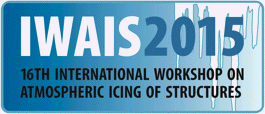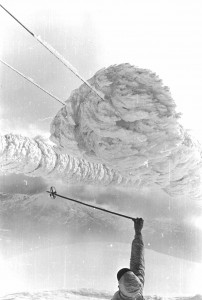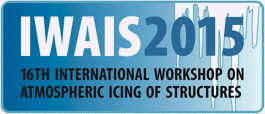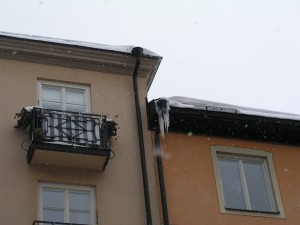
International Workshop on Atmospheric Icing of Structures
Welcome to IWAIS2015
– the world leading conference on icing.
On-going climate change, opening of new logistic routes, energy and mineral resources as well as increasing tourism feed the growing activity in cold climate regions.
One of the major challenges for operations in these areas is ice and snow accretion. Icing reduces safety, operational tempo, productivity and reliability of logistics, industry and infrastructure.
Climate change is making matters worse, with more humid weather and an increase in the frequency of wet snow, which in turn increases the risk of ice accumulating in structures.
That’s why world leading experts on icing meet in the middle of the summer at the 16th International Workshop on Atmospheric Icing of structures (IWAIS) in Uppsala, 28 June to 3 July.
Overhead transmission lines, bridges, masts, towers and wind turbins are among the exposed structures. Heavy icing could lead to abruption of transmission wires and even fall of steel towers.
For example, during the winter seasons 2013/2014 and 2014/2015 Statnett, the transmission system operator in Norway, experienced cases of severe atmospheric icing causing the collapse of transmission towers and the failure of other components.
One of the affected lines was an entirely new 420 kV transmission line crossing an exposed mountain area just north of the Hardanger Fjord in Norway. The measured ice load was more than double the design load, indicating that the ice loads had been significantly underestimated in the pre-construction phase.
The damage caused by severe icing can lead to enormous costs. In early 2008 unusually cold weather coupled with heavy snow and ice paralyzed Southeast China. According to official figures, approximately 1 million homes were either destroyed or damaged. Infrastructure, especially power and water supply, as well as transportation (roads, railways, air, traffic) came to a complete halt in many areas. The agricultural sector was also hit hard, leading to significant losses of livestock and reduced crop yields.
Direct economic losses were estimated at USD 20 bn, while the total insurance market losses were approximately USD 1.3 bn. The bulk of the insurance loss claims came from the commercial/industrial sector, where power transmission and distribution line operators were particularly affected.
Atmospheric icing can also have a profound effect on wind power production. In certain conditions ice can accrete on the blades of a wind turbine and change its aerodynamic properties resulting in lower output power and possibly increased loads.
Another challenge is ice shedding during operation and during start-up of the turbines after an ice event.
Welcome to learn more about the topics at IWAIS2015 in our Book of Abstracts (här ska vara länk)
Also, feel free to contact program coordinator Göran Ronsten, goran@iwais.org or media contact Jonas Hallen, jonas@iwais.org, 0708-866 844.
http://iwais.org/
IWAIS 2015, c/o WindREN and Meventus, Svartsjö slott, Svartsjövägen 2, SE-179 95 Svartsjö, Sweden
 @Presenters: Please check your files.
@Presenters: Please check your files.




